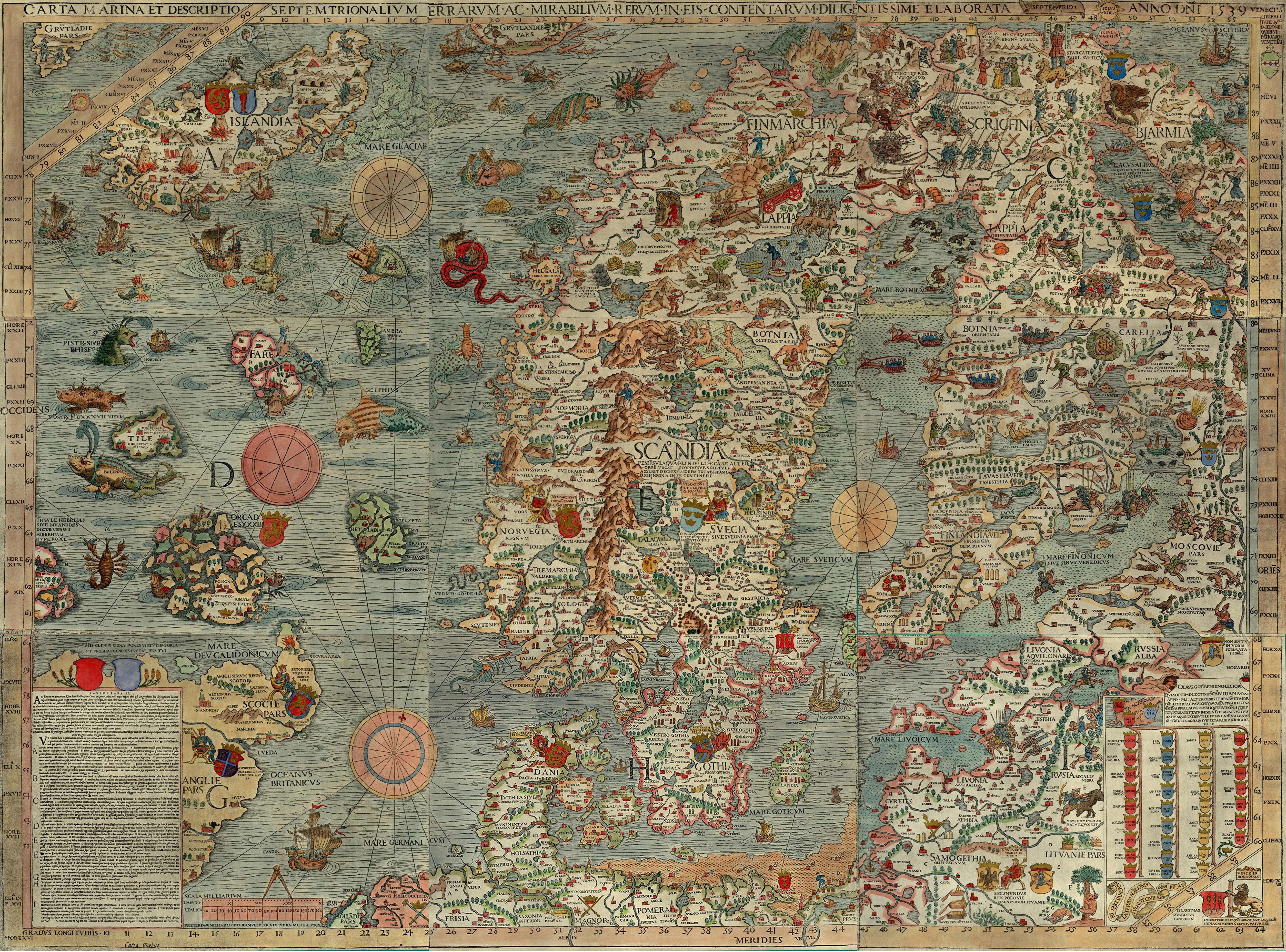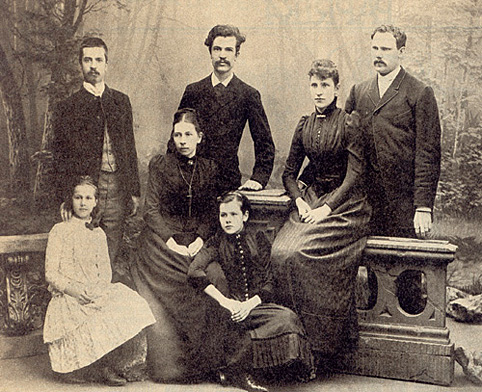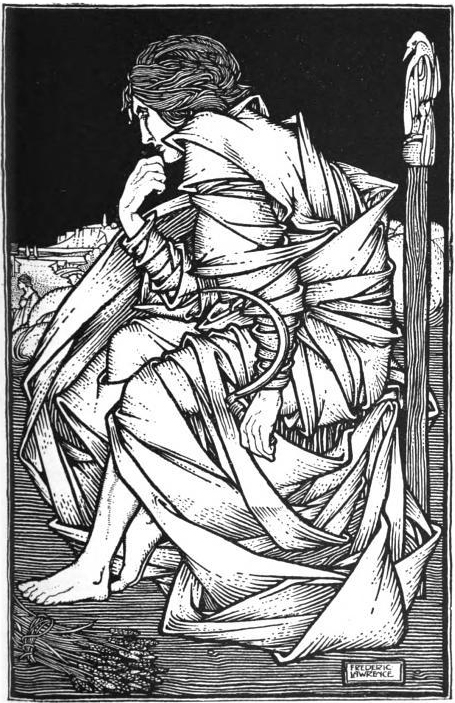|
Sampsa Pellervoinen
Sampsa Pellervoinen is a mythological person from Finnish mythology, who sows all vegetation on earth, all the forests, swamps, meadows, and rock lands too. In the original folk poetry the sowing is done with the help of small pieces of sampo. In the Kalevala, Elias Lönnrot changed the order of things so that the sowing happens before the forging of sampo, in the second poem of the Kalevala during the land's creation. Sampsa is commonly described as a slender youth carrying either a bag or a basket around his neck. He appears as a god of fertility, who has to be ritually awakened every summer. Karelian folklore has preserved possible earlier versions of Sampsa's awakening, where his character is directly connected to old fertility rites. There are many versions of the awakening of Sampsa poem. In the poem, people look for the awakener of Sampsa, so that he would rise to water the plants and fertilize the fields. There are three girls who try to wake him: winter girl, spring girl, a ... [...More Info...] [...Related Items...] OR: [Wikipedia] [Google] [Baidu] |
Sampo
In Finnish mythology, the ''Sampo'' () is a magical device or object described in many different ways that was constructed by the blacksmith Ilmarinen and that brought riches and good fortune to its holder, akin to the horn of plenty (cornucopia) of Greek mythology. When the Sampo was stolen, Ilmarinen's homeland fell upon hard times. He sent an expedition to retrieve it, but in the ensuing battle it was smashed and lost at sea. In the Kalevala The Sampo is a pivotal element of the plot of the Finnish epic poem ''Kalevala'', compiled in 1835 (and expanded in 1849) by Elias Lönnrot based on Finnish oral tradition. In the expanded second version of the poem, the Sampo is forged by Ilmarinen, a legendary smith, to fulfill a task set by the witch queen of Pohjola, Louhi, in return for her daughter's hand. : ''"Ilmarinen, worthy brother,'' : ''Thou the only skilful blacksmith,'' : ''Go and see her wondrous beauty,'' : ''See her gold and silver garments,'' : ''See her robed i ... [...More Info...] [...Related Items...] OR: [Wikipedia] [Google] [Baidu] |
Kalevala
The ''Kalevala'' ( fi, Kalevala, ) is a 19th-century work of epic poetry compiled by Elias Lönnrot from Karelian and Finnish oral folklore and mythology, telling an epic story about the Creation of the Earth, describing the controversies and retaliatory voyages between the peoples of the land of Kalevala called Väinölä and the land of Pohjola and their various protagonists and antagonists, as well as the construction and robbery of the epic mythical wealth-making machine Sampo. The ''Kalevala'' is regarded as the national epic of Karelia and Finland and is one of the most significant works of Finnish literature with J. L. Runeberg's '' The Tales of Ensign Stål'' and Aleksis Kivi's ''The Seven Brothers''. The ''Kalevala'' was instrumental in the development of the Finnish national identity and the intensification of Finland's language strife that ultimately led to Finland's independence from Russia in 1917. The work is also well known internationally and has partly ... [...More Info...] [...Related Items...] OR: [Wikipedia] [Google] [Baidu] |
Elias Lönnrot
Elias Lönnrot (; 9 April 1802 – 19 March 1884) was a Finnish physician, philologist and collector of traditional Finnish oral poetry. He is best known for creating the Finnish national epic, ''Kalevala'', (1835, enlarged 1849), from short ballads and lyric poems gathered from the Finnish oral tradition during several expeditions in Finland, Russian Karelia, the Kola Peninsula and Baltic countries. Education and early life Lönnrot was born in Sammatti, in the province of Uusimaa, Finland, which was then part of Sweden. He studied medicine at the Academy of Turku. The Great Fire of Turku coincided with his first academic year. As the university was destroyed in the fire, it was moved to Helsinki, the newly established administrative center of the Grand Duchy and the present capital city of Finland. Lönnrot followed and graduated in 1832. Early medical career Lönnrot lived in the village of Paltaniemi, when he got a job as district doctor of Kajaani in Eastern Finl ... [...More Info...] [...Related Items...] OR: [Wikipedia] [Google] [Baidu] |
Ingria
Ingria is a historical region in what is now northwestern European Russia. It lies along the southeastern shore of the Gulf of Finland, bordered by Lake Ladoga on the Karelian Isthmus in the north and by the River Narva on the border with Estonia in the west. The earliest known indigenous European peoples of the region are the now mostly Eastern Orthodox Izhorians and Votians, as well as the Ingrian Finns who descend from the Lutheran Finnish immigrants who settled in the area in the 17th century, when Finland proper and Ingria were both parts of the Swedish Empire. Ingria as a whole never formed a separate state, however North Ingria was an independent state for just under two years in 1919–1920. The Ingrians, understood as the inhabitants of Ingria regardless of ethnicity, can hardly be said to have been a nation, although the Soviet Union recognized their "nationality"; as an ethnic group, the Ingrians proper, Izhorians, are close to extinction together with ... [...More Info...] [...Related Items...] OR: [Wikipedia] [Google] [Baidu] |
Kaarle Krohn
Kaarle Krohn (10 May 1863 – 19 July 1933) was a Finnish folklorist, professor and developer of the geographic-historic method of folklore research. He was born into the influential Krohn family of Helsinki. Krohn is best known outside of Finland for his contributions to international folktale research. He devoted most of his life to the study of the epic poetry that forms the basis for the Finnish national epic, the ''Kalevala''.Mary Ellen Brown Bruce A. Rosenberg Peter Harle Kathy Sitarski, ''Encyclopedia of Folklore and Literature'' 1998 Early life Krohn was born in Helsinki. He was the son of journalist and poet Julius Krohn, and his sisters were Aune, Helmi and Aino Kallas, who were Finnish authors. Krohn is best known outside of Finland for his contributions to international folktale research. Krohn passed his matriculation exams in 1880, earned his candidacy degree in 1883 at University of Helsinki, and completed his doctorate in 1888. At the age of 18, he conducted ... [...More Info...] [...Related Items...] OR: [Wikipedia] [Google] [Baidu] |
Frey
Freyr (Old Norse: 'Lord'), sometimes anglicized as Frey, is a widely attested god in Norse mythology, associated with kingship, fertility, peace, and weather. Freyr, sometimes referred to as Yngvi-Freyr, was especially associated with Sweden and seen as an ancestor of the Swedish royal house. According to Adam of Bremen, Freyr was associated with peace and pleasure, and was represented with a phallic statue in the Temple at Uppsala. According to Snorri Sturluson, Freyr was "the most renowned of the æsir", and was venerated for good harvest and peace. In the mythological stories in the Icelandic books the ''Poetic Edda'' and the ''Prose Edda'', Freyr is presented as one of the Vanir, the son of the god Njörðr and his sister-wife, as well as the twin brother of the goddess Freyja. The gods gave him Álfheimr, the realm of the Elves, as a teething present. He rides the shining dwarf-made boar Gullinbursti and possesses the ship Skíðblaðnir which always has a favorable b ... [...More Info...] [...Related Items...] OR: [Wikipedia] [Google] [Baidu] |
Heikki Kirkinen
Heikki Kirkinen (22 September 1927 in Kuusjärvi – 9 January 2018) was a Finnish historian who was professor of Finnish and European history at the University of Eastern Finland in Joensuu, Finland. He has been a visiting professor in the Finnish language, literature and culture at Sorbonne, 1966–1970. Kirkinen has written many books about the Karelia Karelia ( Karelian and fi, Karjala, ; rus, Каре́лия, links=y, r=Karélija, p=kɐˈrʲelʲɪjə, historically ''Korjela''; sv, Karelen), the land of the Karelian people, is an area in Northern Europe of historical significance for ...n history and the Karelian identity. One of his main interests was music; he has studied musicology and even composed music himself. Publications * ''Les origines de la conception moderne de l'hommemachine'' (1960) * ''Le monde kalévaléen en France et en Finlande'' (1987, with Jean Perrot) * ''Informatique et développement des régions marginales'' (1988, editor) * ''Protec ... [...More Info...] [...Related Items...] OR: [Wikipedia] [Google] [Baidu] |
Sampson The Hospitable
Sampson the Hospitable ( el, Σαμψὼν ὁ φιλόξενος, ; died 530 AD) was a citizen of Constantinople who devoted his time to serving the poor of the city. He is venerated as a saint in the Eastern Churches as well in the Catholic Church. Life Sampson (or Samson) was born in Rome to a prominent family. He was a physician who devoted much of his time to helping the poor and sick. He turned his home into a free clinic, providing his patients with food and lodging as well as medical care. He was later ordained a priest by the patriarch. When the Byzantine emperor Justinian the Great became ill he sent for Sampson to cure him. He was the only physician in the city to do the emperor any good, and the emperor wanted to reward him. Sampson requested that the emperor help him establish a new hospital for the poor. With the emperor's assistance, Samson founded the hospital, which became the largest free clinic in the empire and served the people of Constantinople for 6 ... [...More Info...] [...Related Items...] OR: [Wikipedia] [Google] [Baidu] |
Raymond Wilson Chambers
Raymond Wilson Chambers (12 November 1874 – 23 April 1942) was a British literary scholar, author, librarian and academic; throughout his career he was associated with University College London (UCL). Life Chambers was educated at University College, studying under such eminent scholars as W. P. Ker and A. E. Housman; he was Librarian at that institution from 1901 to 1922, and assistant professor in the English department, 1904–14. He served in World War I, with the Red Cross in France, and in Belgium with the YMCA/ B.E.F. Chambers became Quain Professor of English at UCL in 1922. Chambers wrote on a wide variety of subjects relating to English literature, history, and culture; notably, he worked on the Shakespearean additions to the play ''Sir Thomas More'', with Alfred W. Pollard and other scholars. His acclaimed 1935 biography, ''Thomas More'', was awarded the James Tait Black Memorial Prize. Chambers and Tolkien Chambers was a friend of J.R.R. Tolkien and their ... [...More Info...] [...Related Items...] OR: [Wikipedia] [Google] [Baidu] |
Beowulf
''Beowulf'' (; ang, Bēowulf ) is an Old English Epic poetry, epic poem in the tradition of Germanic heroic legend consisting of 3,182 Alliterative verse, alliterative lines. It is one of the most important and List of translations of Beowulf, most often translated works of Old English literature. The date of composition is a matter of contention among scholars; the only certain dating is for the manuscript, which was produced between 975 and 1025. Scholars call the anonymous author the "''Beowulf'' poet". The story is set in pagan Scandinavia in the 6th century. Beowulf (hero), Beowulf, a hero of the Geats, comes to the aid of Hrothgar, the king of the Danes (Germanic tribe), Danes, whose mead hall in Heorot has been under attack by the monster Grendel. After Beowulf slays him, Grendel's mother attacks the hall and is then defeated. Victorious, Beowulf goes home to Geatland and becomes king of the Geats. Fifty years later, Beowulf defeats a The Dragon (Beowulf), dragon, b ... [...More Info...] [...Related Items...] OR: [Wikipedia] [Google] [Baidu] |





